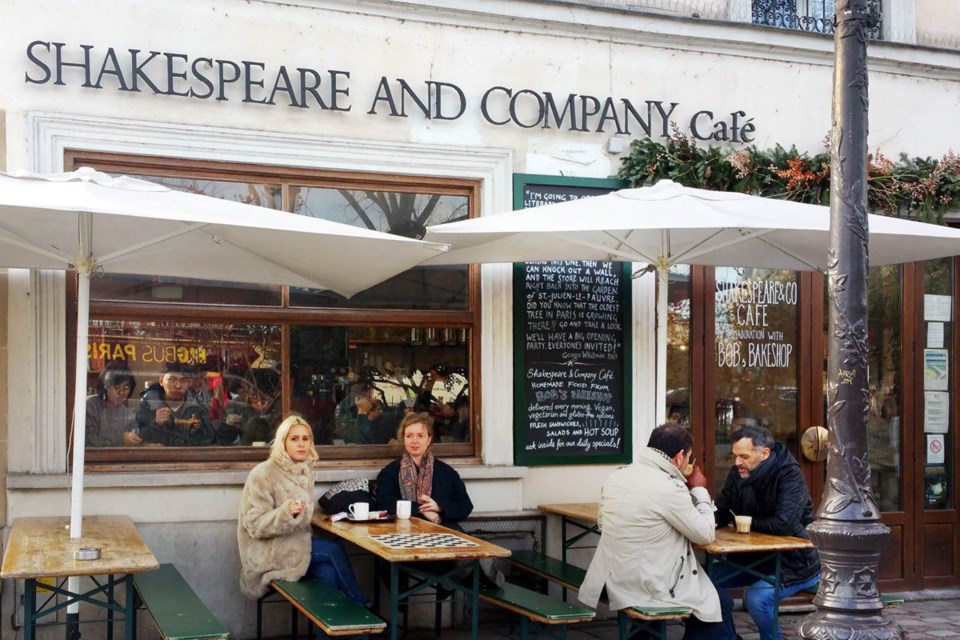Every time I travel to Europe in the off-season, I find myself enjoying a cool and comfy tranquility — and not missing the heat and crowds that so often come with peak season.
But even more than that, I enjoy catching Europe by surprise — at its candid best, living everyday life. When I travel outside tourist season, Europe seems even more welcoming than normal.
Some of my warmest European memories have been gained while wearing a sweater in the off season.
Lingering over a café crème in a nearly tourist-free Paris, I’m joined by a tiny bird on the next wicker chair as we watch Parisians parade by.
I enjoy a theatre and music scene designed for locals rather than tourists. I take my time at a château in France’s Loire Valley, with a big log on the fire and guards relaxed and happy to chat.
I sit alone on a pebbly Italian Riviera beach and step into the wonder of St. Peter’s Basilica in Rome with none of the jostle.
Bundle up and get convivial with Europe in the off-season and you’ll understand why, for so many, that’s a favourite time to travel.
There are also some practical advantages to travelling in the off-season (November through March).
Airfare is generally cheaper. Outside of places that get lots of business travellers, hotels and Airbnb-type rentals are also less expensive, and you can sometimes even bargain for deeper discounts.
In winter, you can usually walk right in at sights that are plagued with lines in peak season. Without having to buy advance tickets, you can often show up when you want at places such as Florence’s Uffizi, Paris’s Orsay and Barcelona’s Picasso Museum.
Sightseeing crowds are thinner, allowing you to spend some time enjoying Europe’s treasures up close.
Of course, winter travel also comes with drawbacks. Because much of Europe is at Canadian latitudes, days are short, and it’s generally dark by 5 p.m.
The weather can be cold, windy, drizzly and generally dreary, and you’ll need to pack heavier, including a good waterproof coat and shoes.
In winter, sightseeing priorities change. You’ll probably do less meandering and exploring of neighbourhoods, and more bee-lining to and from sights.
Museums provide a warm and cosy haven, while outdoor sights can be harder to enjoy — frigid weather can drain the fun out of even the Eiffel Tower and other must-sees.
Many sights operate on shorter hours in the off-season, often closing around sunset. English-language tours, common in the summer, are not as common in the off-season, when most visitors are locals.
And winter sightseeing can be especially frustrating in smaller tourist towns, where many sights and restaurants close down entirely.
Off-season is a fine time to visit big cities, which bustle year-round, as well as the Mediterranean region (Italy, Spain, Portugal, etc.), which is often horribly hot and crowded in the summer, but fairly mild in winter.
While Europe’s wonderful outdoor evening ambience tends to hibernate during winter in the north, it survives all year in the south. And, of course, in some places, such as Switzerland, winter activities — skiing, sledding and other snow sports — are an important part of the culture (and tourism).
The month leading up to Christmas is an especially fun time in Europe.
For instance, German towns big and small light up with Christmas markets, highlighted by carollers, festive decor, artisan ornaments and other handicrafts, and seasonal treats such as hot spiced wine. Christmas markets are also popular in Switzerland, Austria and other countries.
In London, Paris and other cities, buildings and streets dress in their holiday best and outdoor ice rinks pop up.
In Paris, hundreds of fresh-cut fir trees line the Champs-Elysées, sparkling with a dazzling display of lights.
In Britain, a fun holiday tradition is the “panto” — campy fairytale plays with outrageous costumes, sets, dance numbers and audience participation.
Late winter brings more raucous revelry, when various Mardi Gras/Carnival celebrations brighten the mood throughout Europe in February.
The quintessential destination is Venice, which erupts for 18 days in an extravagant festival of costumes, parties, dinners, themed parades and masquerade balls — a final debauchery before the restrictions of Lent. The festivities end with a huge dance on St. Mark’s Square, lit with fireworks.
Outside of holiday and festival times, Europe is quiet in winter.
While fields and squares are filled with colour and vibrancy in the summer, in winter the atmosphere feels intimate, as naked branches, lonely vistas and solitary candles flickering in windows offer a peaceful charm with the promise of life and renewal just around the corner.
Rick Steves (ricksteves.com) writes European travel guidebooks and hosts travel shows on public television and public radio. Email him at _rick@ricksteves.com and follow his blog on Facebook.



